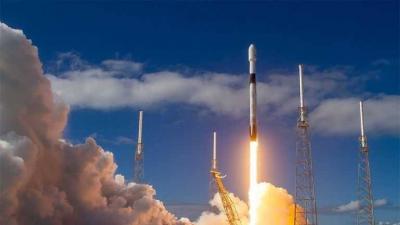In a historic mission, the UAE’s lunar rover "Rashid" launched towards the moon on Sunday, marking the first Arab and fourth global mission of its kind, with an expected journey duration of 5 months. The UAE's Rashid rover is scheduled to land on the lunar surface in April 2023. The rover carries the Japanese lander "Hakuto-R" aboard the SpaceX Falcon 9 launch rocket, achieving a new milestone for the UAE in the space sector, being "the first mission of its kind in the Arab world."
The scientific mission is set to last one lunar day, equivalent to 14 Earth days, and the spacecraft will take a low-energy trajectory to the moon instead of a direct approach. The initial launch attempt had been postponed, allowing SpaceX to conduct additional checks ahead of the launch. The Mohammed Bin Rashid Space Centre had announced that the original launch date for the UAE’s lunar exploration project was November 28, prior to the delay.
The landing site for the Rashid rover will be in the Atlas crater, located at 47.5 degrees North and 44.4 degrees East on the southeastern outer edge of the Mare Frigoris, known as the "Sea of Cold," situated at the northernmost part of the moon. This area was selected "to maintain flexibility during mission operations," according to WAM agency. The landing site was also chosen considering various emergency scenarios that could be utilized based on changing conditions during transit, as the site meets the technical specifications and scientific objectives of the UAE’s lunar exploration project.
What will the "Rashid" rover do upon landing? Immediately upon landing, the Rashid rover will study the characteristics of the lunar soil, rocks, and geology. It will also monitor the movement of dust, plasma, and the electro-optical environment, all of which are new discoveries about this area of the moon. The Atlas crater is an unexplored site by any previous spacecraft or manned missions, making the UAE's lunar exploration project "one of the most anticipated missions."




